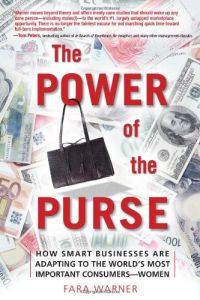Join getAbstract to access the summary!

Join getAbstract to access the summary!
Fara Warner
The Power of the Purse
How Smart Businesses Are Adapting to the World's Most Important Consumers — Women
FT Prentice Hall, 2005
What's inside?
If you want to sell to women, avoid empty slogans and pink walls. Instead, research your market.
Recommendation
This book combines the story of women’s new economic power with case studies that detail how major companies have revamped their marketing to target women customers. Author Fara Warner, a journalist, knows her beat. In fact, she sometimes gets carried away with the facts, and her style can be dry and predictable. Still, getAbstract.com finds this book invaluable for marketers and people interested in women’s emerging economic clout, a major social and demographic trend. Warner provides specific advice that will help you avoid costly, time-consuming marketing mistakes as you pursue these crucial customers.
Summary
About the Author
Fara Warner has written about marketing for the Wall Street Journal, The New York Times, Fast Company, Brandweek and other national publications. She has a master’s degree from Columbia University and received a Knight-Wallace Fellowship at the University of Michigan.

















Comment on this summary